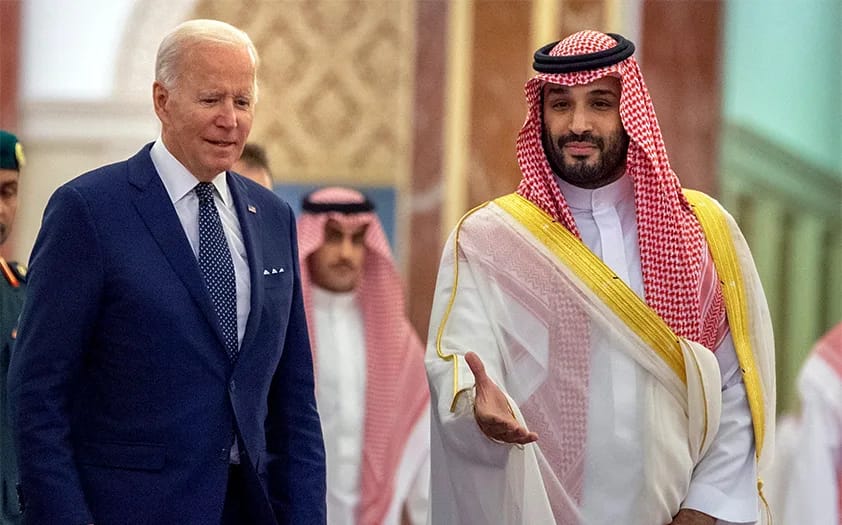As Saudi Arabia takes a stand by reducing its oil supply, US drivers may face the consequences of higher gas prices.
TWC – In a bold move aimed at bolstering crude oil prices, Saudi Arabia has slashed its oil supply to the global market. This unilateral decision comes after previous attempts by major producing countries in the OPEC+ alliance to cut supply failed to have the desired effect on oil prices.
In July, Saudi Arabia plans to reduce its daily oil production by 1 million barrels. Meanwhile, other OPEC+ producers agreed in a recent meeting in Vienna to extend their production cuts throughout the following year. Saudi Energy Minister Abdulaziz bin Salman referred to this reduction as a “lollipop” and stated that it could be extended further to ensure market stability.
While this move may temporarily increase oil prices, the long-term impact depends on Saudi Arabia’s decision to extend the supply cut. Jorge Leon, senior vice president of oil markets research at Rystad Energy, suggests that the amount provides a price floor since Saudi Arabia can adjust the voluntary reduction as needed.
The decrease in oil prices has benefited US drivers, who have enjoyed lower fuel costs, providing some relief from inflation. However, Leon warns that gas prices are unlikely to become cheaper and may even become slightly more expensive due to this supply cut.
The decision by Saudi Arabia to implement another supply cut reflects the uncertain demand outlook for fuel in the coming months. Concerns persist regarding economic weakness in the US and Europe, while China’s recovery from COVID-19 restrictions has been slower than anticipated.
As the dominant producer in the OPEC oil cartel, Saudi Arabia previously participated in a surprise cut of 1.6 million barrels per day in April. The kingdom’s share was 500,000 barrels. This move, coupled with OPEC+’s announcement in October to slash 2 million barrels per day, had previously caused tension with US President Joe Biden, who was concerned about the potential for higher gasoline prices ahead of the midterm elections.
In total, OPEC+ has now reduced production on paper by 4.6 million barrels per day. However, due to certain countries’ inability to meet their quotas, the reduction amounts to approximately 3.5 million barrels daily or over 3% of the global supply.
Despite the previous cuts, oil prices did not experience a sustained increase. While international benchmark Brent crude briefly reached $87 per barrel, it has since retreated and remains below $75 per barrel in recent days. US crude prices have also dipped below $70.
This price decline has benefited US drivers as they embark on the summer travel season, with pump prices averaging $3.55, down $1.02 compared to a year ago, according to the auto club AAA. The drop in energy prices also decreased inflation among the 20 European countries that use the euro, reaching its lowest level before Russia invaded Ukraine.
Saudi Arabia requires sustained high oil revenue to finance ambitious development projects aimed at diversifying its economy. The International Monetary Fund estimates that the kingdom needs oil prices to reach $80.90 per barrel to meet its planned spending commitments, including the $500 billion Neom project, a futuristic desert city.
The recent replenishment of the US Strategic Petroleum Reserve suggests that US officials may be less concerned about the impact of OPEC cuts compared to previous months, as Biden authorized the most significant release from the national reserve in American history last year.
While oil-producing countries such as Saudi Arabia rely on oil revenue to support their budgets, they must also consider the effects of higher prices on oil-consuming nations. Excessive oil prices can lead to inflation, reducing consumer purchasing power and potentially prompting central banks like the US Federal Reserve to implement interest rate hikes that could slow economic growth.
Additionally, the Saudi production cut and subsequent increase in oil prices could further contribute to the profits enabling Russia to fund its ongoing conflict with Ukraine. Despite Western sanctions aimed at limiting Moscow’s crucial energy income, Russia has found alternative oil customers in India, China, and Turkey.
However, higher crude prices risk complicating trade for the world’s third-largest oil producer if they surpass the $60-per-barrel price cap imposed by the Group of Seven major democracies. Russia has attempted to evade this cap by using “dark fleet” tankers, which manipulate location data or transfer oil from ship to ship to conceal its origin, albeit at an additional cost.
Under the OPEC+ agreement, Russian Deputy Prime Minister Alexander Novak stated that Moscow intends to extend its voluntary cut of 500,000 barrels per day through next year, as the Russian state news agency Tass reported. Nevertheless, recent data from the International Energy Agency reveals that Russia’s total exports of oil and refined products, including diesel fuel, surged to a post-invasion high of 8.3 million barrels per day in April.
As Saudi Arabia implements this unilateral oil supply cut, it remains to be seen how the market will react and whether US drivers will face the consequences of higher gas prices. The delicate balance between oil-producing countries’ need for revenue and the potential adverse effects of elevated oil prices on global economies adds a layer of complexity to the situation.

